2024.2: More voice, more icons, more integrations, more... everything!
Home Assistant Core 2024.2! 🥰
Undoubtedly, you’ve heard about last year’s “The Year of the Voice”. 2023 might be over, but we are definitely not done with voice yet! This release contains some very cool new features for voice.
Not just that, we’ve also launched a voice assistant contest
that you could join, and I’m happy to inform you that we will have another voice-related
live stream on 21 February 2024, at 12:00 PST / 21:00 CET: Chapter 6
But there is more in this release besides voice! There’s drag ’n drop magic for our automation editor, and you can now update Zigbee devices directly from Home Assistant. We also have icons in more places 🤩, and quite a lot of new functionalities for Matter devices.
In general, contributions to our open-source project have been amazing this month. I’ve never seen so many contributed bug fixes, improvements, and new features in a single release. Like… 21 new integrations! This is, without a doubt, the largest release we’ve ever put out. A big shout-out to everyone who helped! ❤️
Enjoy the release!
../Frenck
Oh! And don’t forget Valentine’s Day is coming up! 😘
- Better drag & drop support for automations
- Export data from the history dashboard
- Improved error responses when using Assist
- Custom Assist responses in automations using the sentence trigger
- All known Assist devices
- Updating your Zigbee devices
- Matter diagnostics and actions
- Icons everywhere
- Integrations with authentication issues are now shown in the repairs dashboards
- Revamped Proximity integration
- Shipping on a new Python version
- Other noteworthy changes
- New integrations
- Integrations now available to set up from the UI
- Release 2024.2.1 - February 9
- Release 2024.2.2 - February 16
- Release 2024.2.3 - February 22
- Release 2024.2.4 - February 25
- Release 2024.2.5 - February 27
- Need help? Join the community!
- Backward-incompatible changes
- Farewell to the following
- All changes
Don’t forget to join our release party live stream on YouTube
Better drag & drop support for automations
Let’s start with some old-fashioned drag ’n drop magic! 🪄
As of this release, dragging and dropping triggers, conditions, and actions in the automation editor are always enabled. Previously, you had to explicitly enable re-ordering in the automation editor settings, but now, it is just always active.
But even more exciting is that you can now drag and drop elements into other nested elements! For example, you can now drag a condition into the condition of an if-then or choose action. 🤯

Export data from the history dashboard
The following feature might be small, but it is a big deal for many. Home Assistant stores your data privately and locally; it is your data. To make this data more accessible, we’ve added a new feature to the history dashboard.
You can now download the data you are viewing in the history dashboard. This allows you to further analyze the data in, for example, Excel or to visualize it in other ways.
The button will export and download the data you currently view in the history
dashboard as a CSV file

Thanks for this one @balloob
Improved error responses when using Assist
If you use Assist, our private voice assistant, you may have noticed that its responses were not meaningful when something was not understood.
Some of the errors encountered while using Assist can easily be fixed on your side by adding aliases to entities or areas, exposing entities to Assist, or assigning entities and devices to the correct areas.
So we are taking the first step to help you fix these errors: as of this release, Assist provides much better errors in case your intention is understood, but something else is missing (An unknown name, area, device class, or domain).
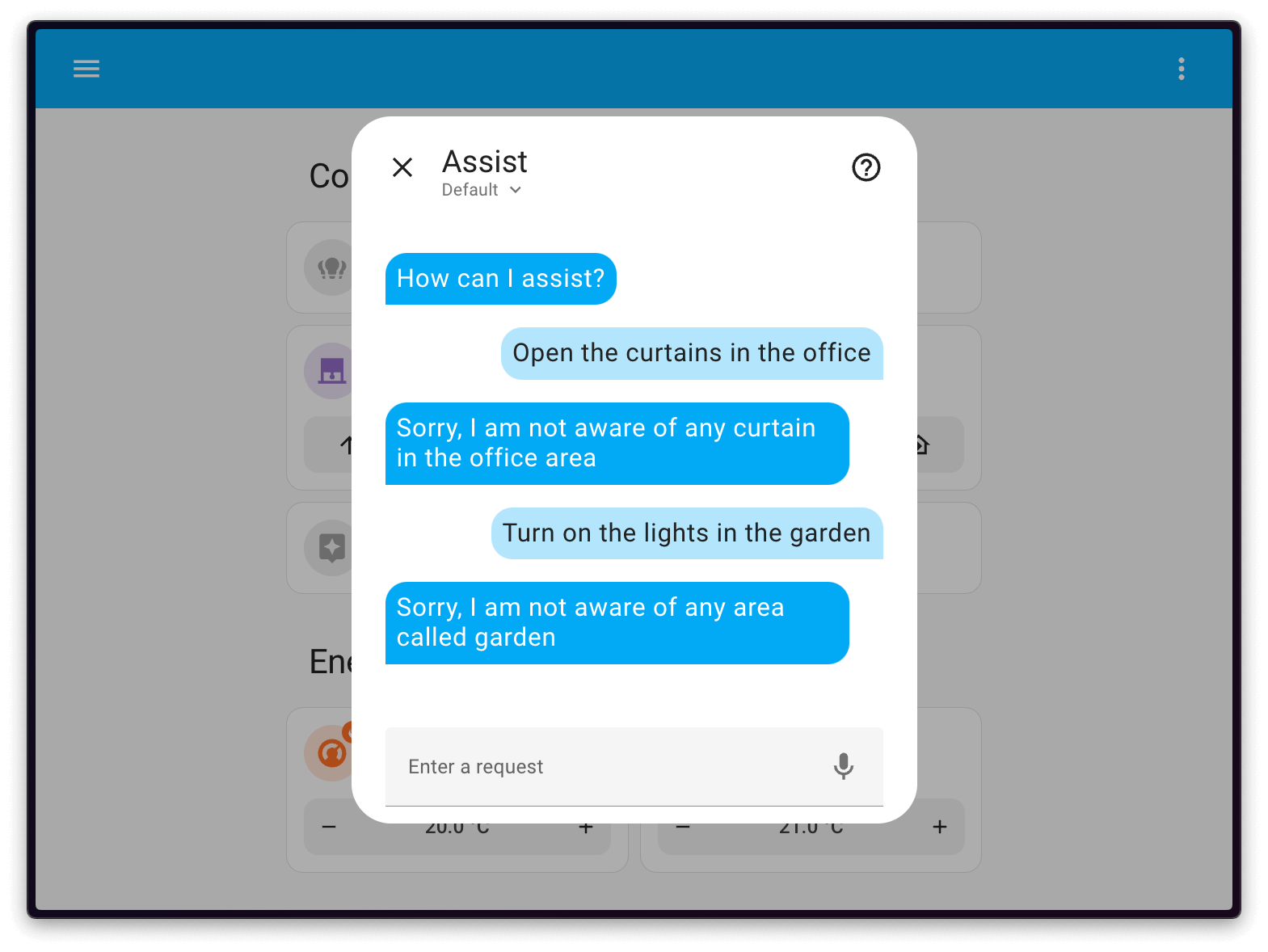
Custom Assist responses in automations using the sentence trigger
Like almost every other component and feature of Home Assistant, Assist can be customized and extended to understand more sentences.
A few releases ago, we introduced a very simple way to extend what Assist understands: The sentence trigger in our automation engine.
Up until now, using a sentence trigger always led to the same Assist response: “Done”. In fact, the only way to define a custom response was to write complex custom sentences in YAML.
This release introduces a new action to set a custom response in your sentence-triggered automations directly inside the automation editor.
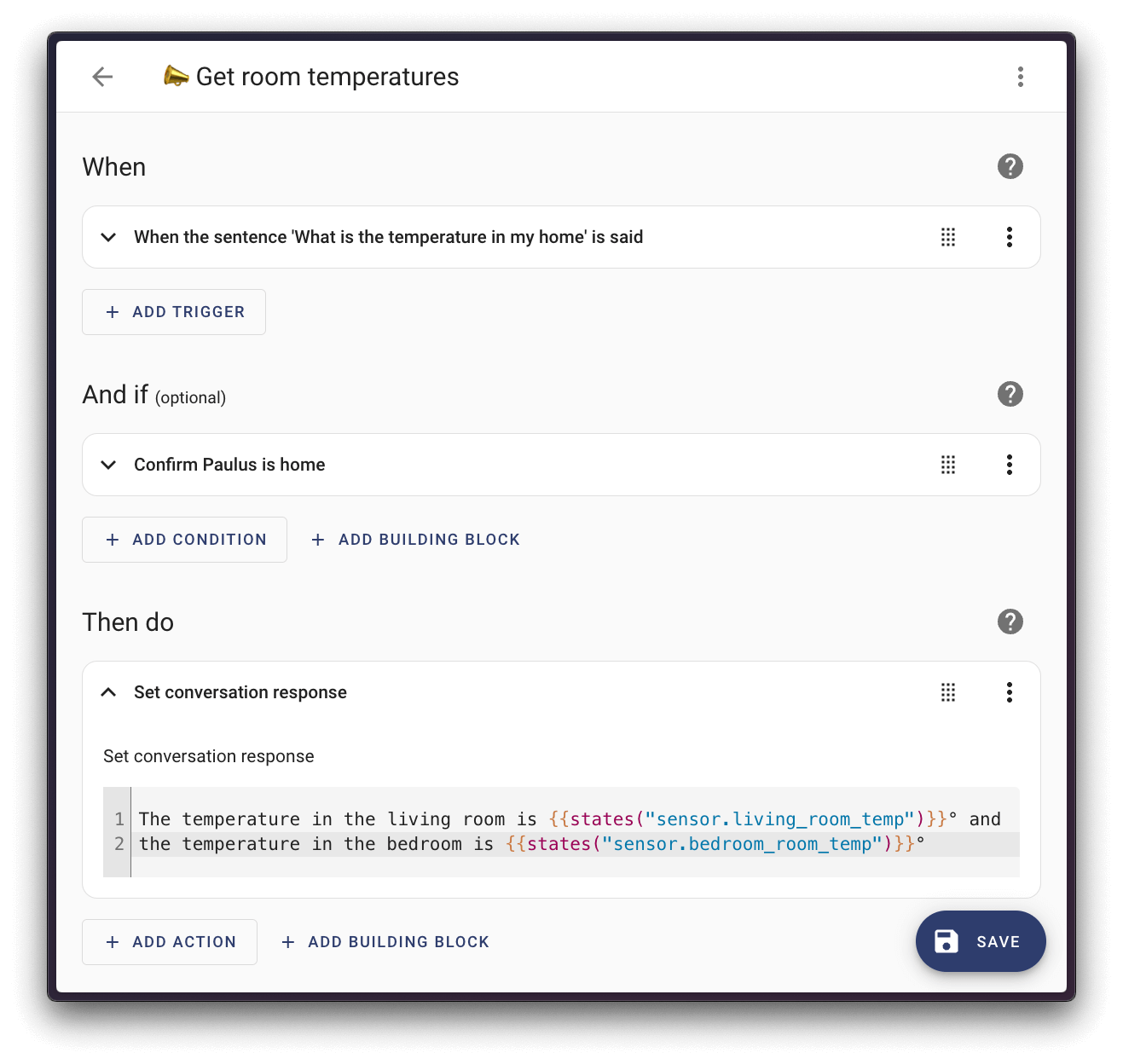
The response field accepts templates, so it can be used to build complex responses, for example, listing all your room temperatures.
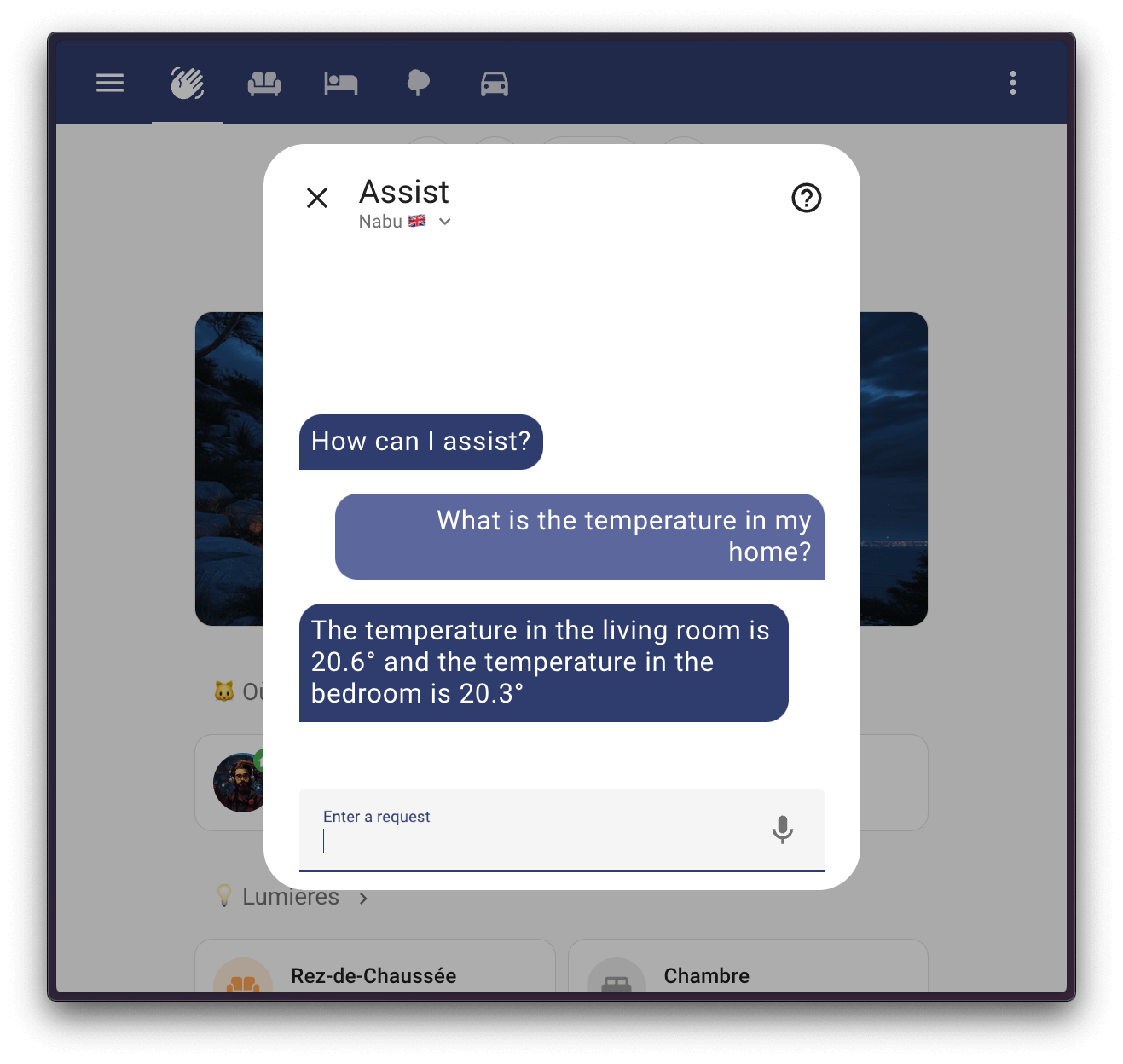
A very cool feature that might come in handy if you build an automation blueprint to submit as an entry for our voice assistant contest!
All known Assist devices
Last addition for voice, we’ve added a small additional page to give you an overview of all the Assist devices you have active in your Home. You can find this on the Assist configuration dashboard by selecting the new “Assist devices” button.
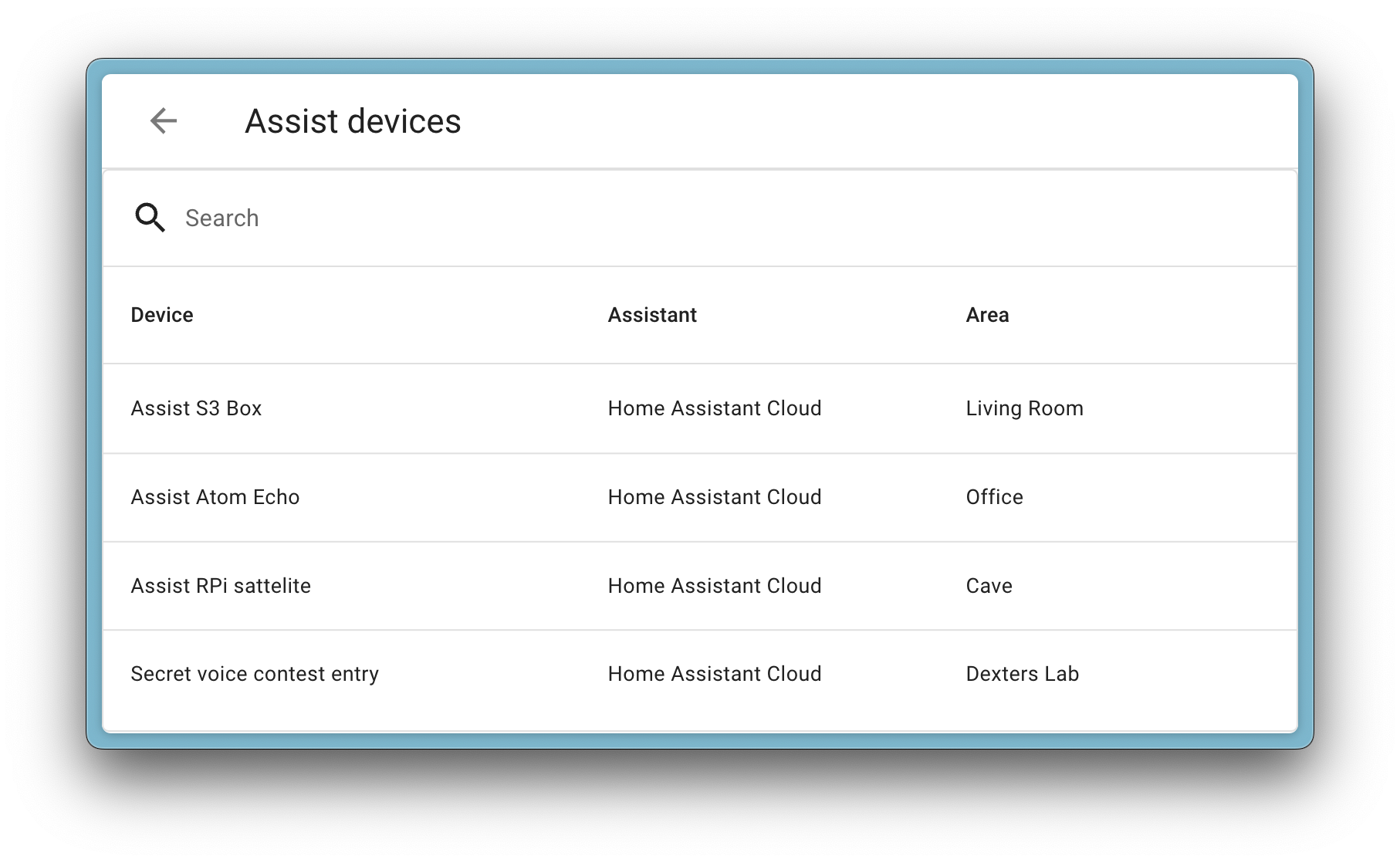
Or, use this My Home Assistant button below to navigate to the voice assistants configuration dashboard:
Updating your Zigbee devices
ZHA (Zigbee Home Automation, our built-in Zigbee integration) now provides update entities to Home Assistant!
This means you can get notified when a device has a firmware update available, and you can trigger the update from Home Assistant!
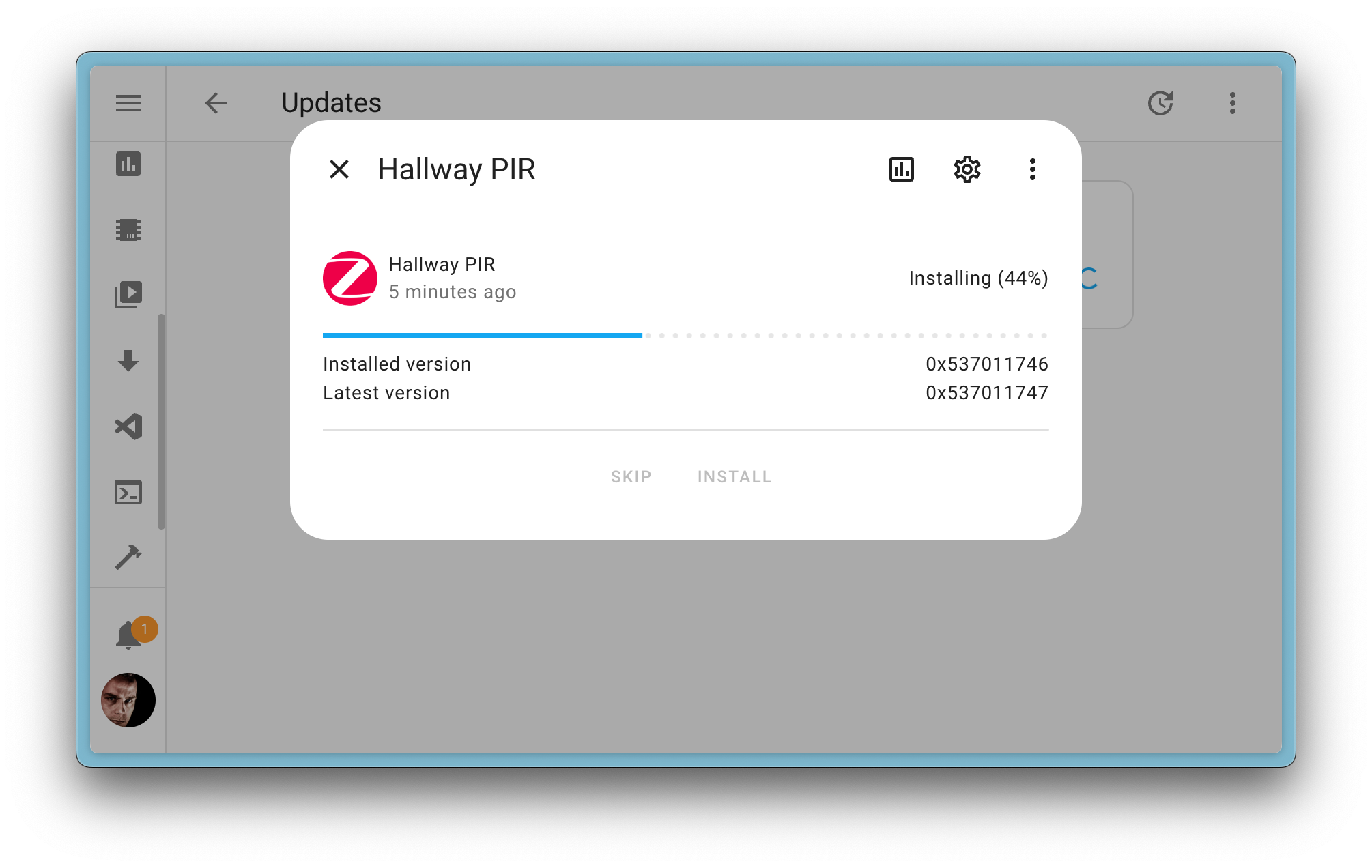
Noticed the weird version numbers? Unfortunately, that is how version numbers in the Zigbee standard work and look. We haven’t figured out a way to translate them to something more human-readable format that matches what the manufacturer communicates.
Currently, it supports updating Inovelli, OSRAM/Ledvance, Sonoff, and ThirdReality devices, and we are looking at adding support for more brands in the future. Be aware, Zigbee is a slow protocol, and firmware updates can take a long time (sometimes hours).
Matter diagnostics and actions
Home Assistant works actively to provide the best support for Matter devices out of the box. To help with that, we have added more information and controls for your Matter devices in the UI.
On the device page of the Matter device in Home Assistant, we will now show additional diagnostic information about the device. This information can be used to troubleshoot issues with the device or when reporting issues. Some examples include the network type the device uses, its addresses, and IDs, device types and its connected fabrics.
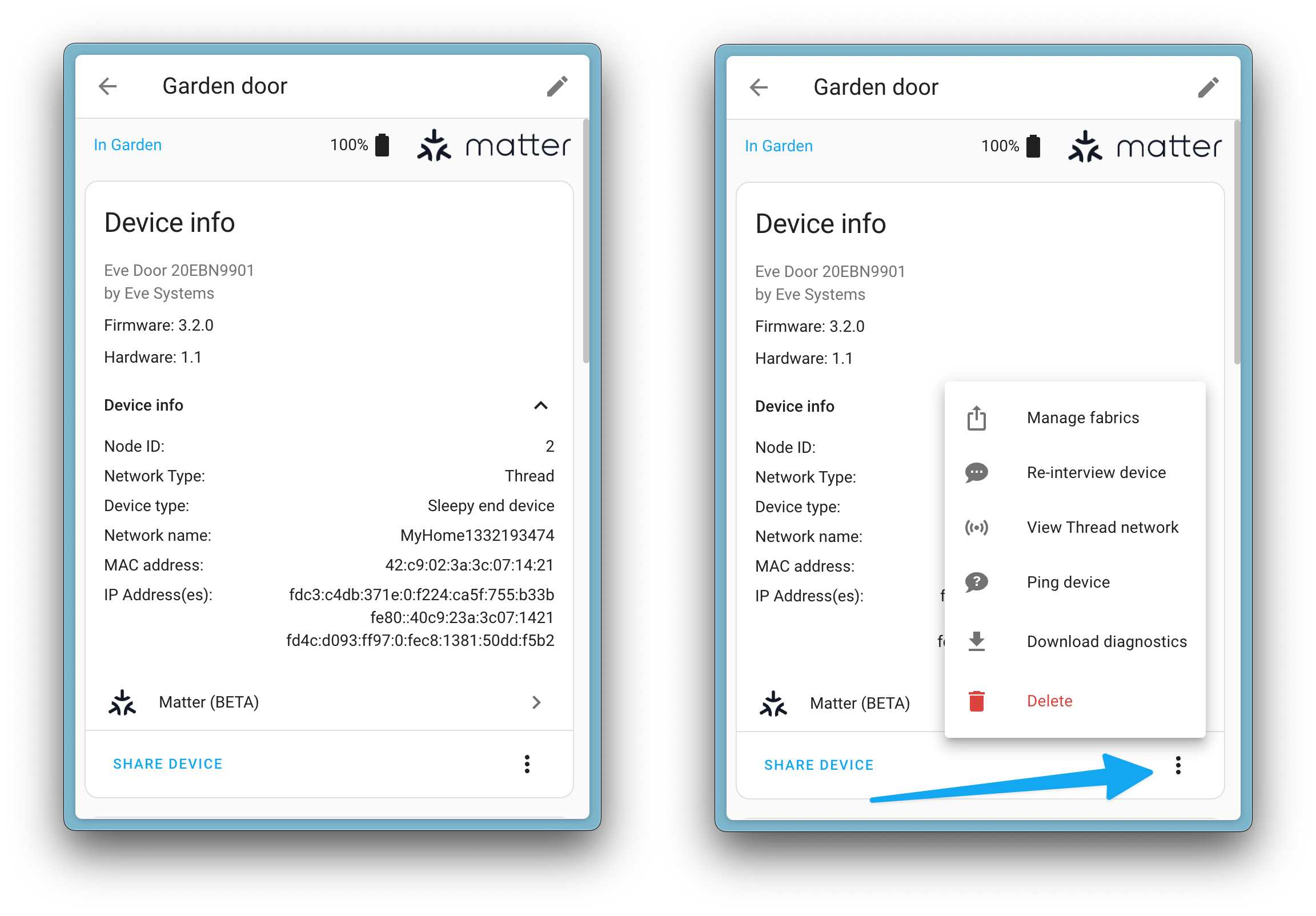
Besides more information, you can also take new actions on the device. For example, ping the device to check if it is available, force a full device interview to sync all its information, remove it from another controller, and even a new button to share your Matter device from Home Assistant with another Matter controller.
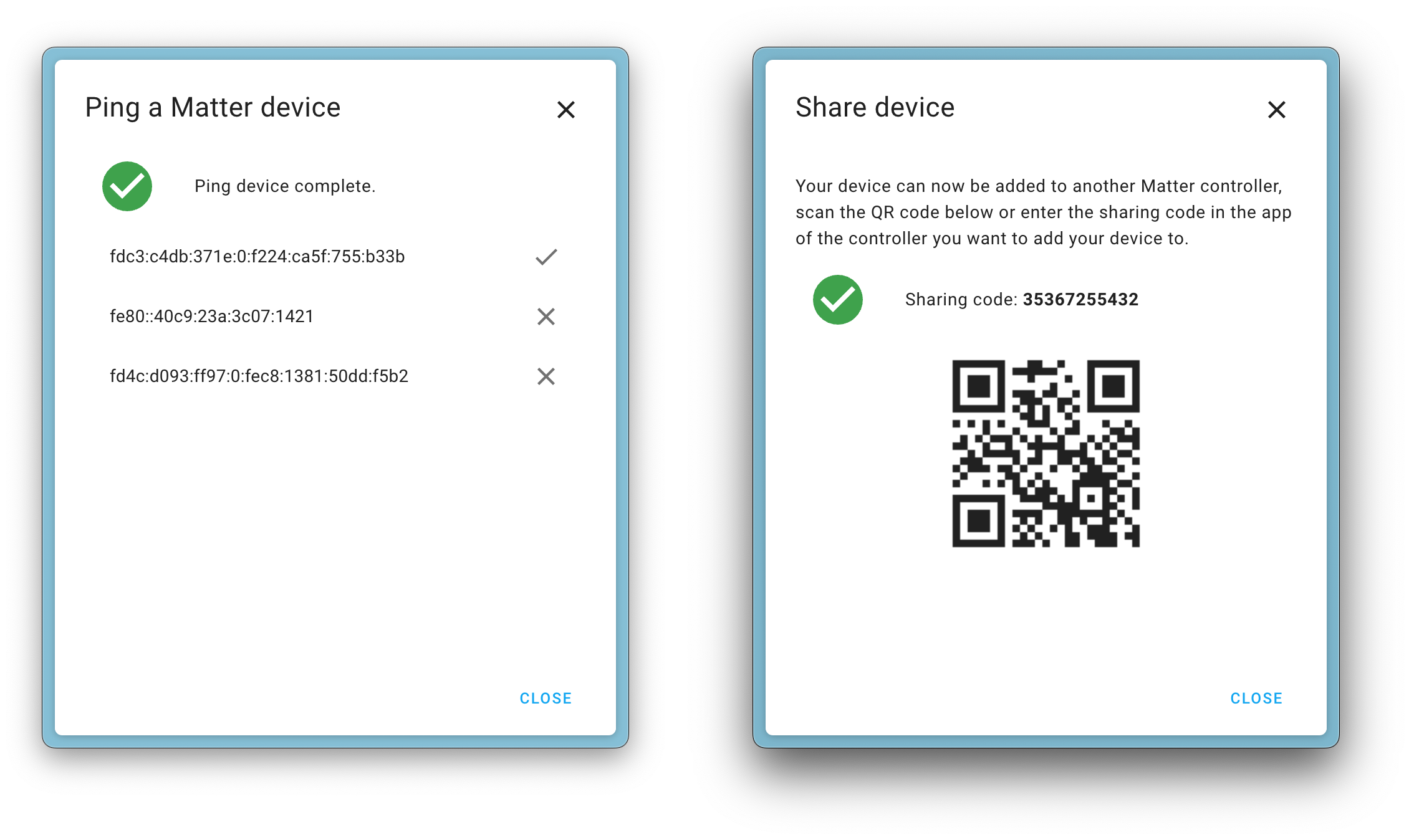
Icons everywhere
We completely changed how Home Assistant handles icons under the hood. A big effort from many people, with almost… no change! That is right, almost everything looks just the same as before. 😁
We did make some improvements! For example, integrations can now provide icons for things like fan speeds or thermostat presets. Also, service call actions can now have their own icon as well:
Areas now have icons too! You can set them in the area configuration. They show up in the area selectors and in the area dashboard itself (in case you didn’t upload a picture).
Integrations with authentication issues are now shown in the repairs dashboards
When one of your integrations has authentication issues, Home Assistant will now report this in the repairs dashboard.
Previously, this was only visible on the integration dashboard, but now it shows up in the repairs dashboard, as this is the place where Home Assistant reports all issues with your system.
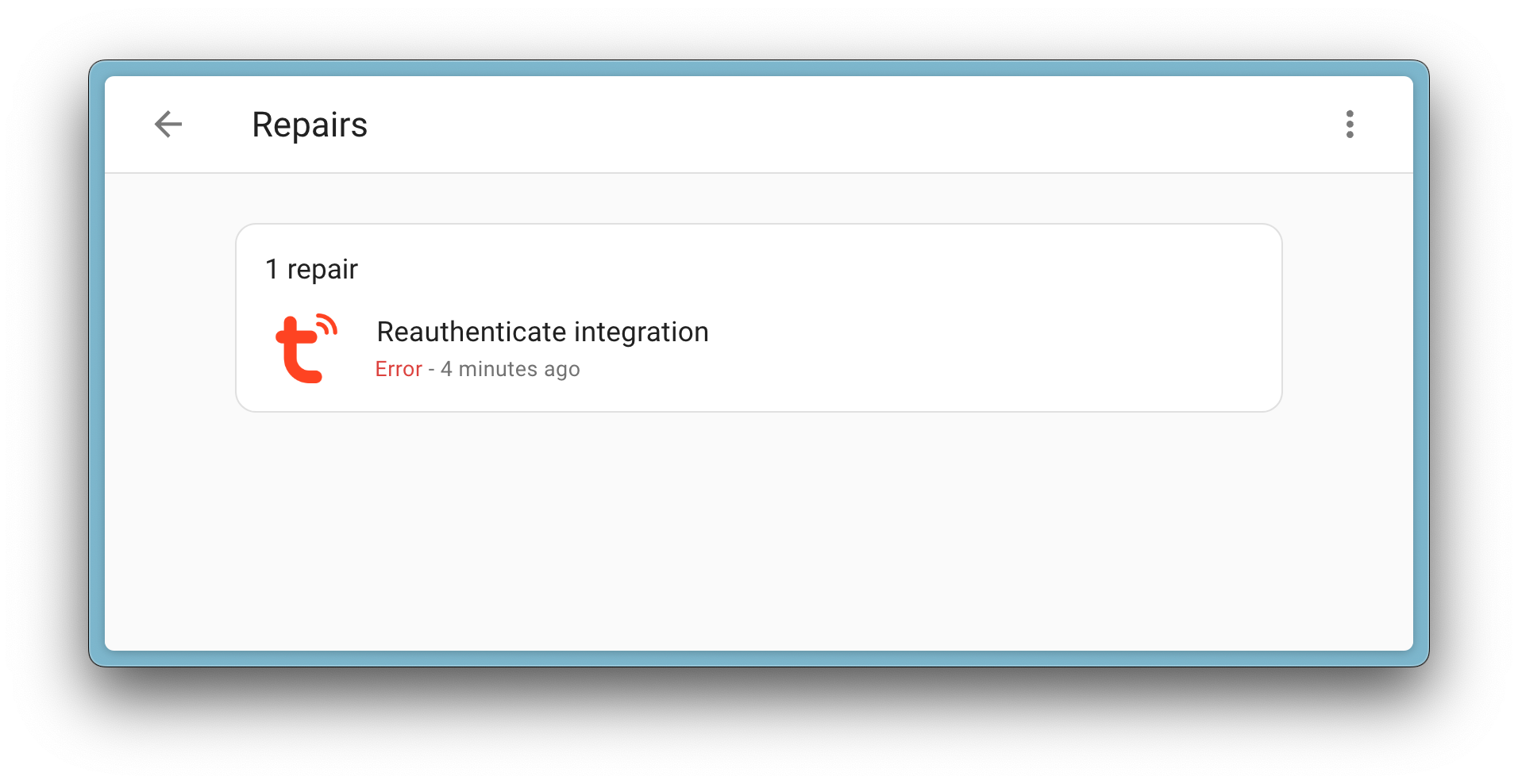
Revamped Proximity integration
For this release, @mib1185
It is an extremely powerful tool for automations. It allows you to create automations based on the proximity of people. For example, if you are within a certain range from your home and traveling towards it, you could use Home Assistant to turn on the lights, open the garage door, turn up the heating, and start your favorite playlist in the living room. Welcome home! 🤗
The best part? This integration is now available to set up from the UI! Not just that, but it now uses normal sensor entities that we are all already familiar with. This will make automating and displaying the data a breeze!

Thanks @mib1185
If you are already using this integration, this change will come with the deprecation of the old entities. See our backwards-incompatible changes for more information.
Shipping on a new Python version
This release ships running on Python 3.12! In case you are wondering, what is that? Well, Python is the programming language Home Assistant is written in.
Why it matters? It provides many improvements to the foundation we are building Home Assistant on, most notably: It is faster! 🚀
Don’t worry! If you run the Home Assistant Operating System or are using the Home Assistant Container installation type: You won’t have to do anything, as we handle the upgrade to Python 3.12 for you. Just upgrade Home Assistant as you normally would, and you are good to go! 😎
Other noteworthy changes
There are many more improvements in this release; here are some of the other noteworthy changes this release:
-
@edenhaus
improved how we handle errors in our form fields. We no longer show the technical coding gibberish that often showed up in the past. Nice! - When you change the type of a switch entity to, for example, a garage door
entity, you will now have the option to invert its behavior.
Thanks, @emontnemery
! - The Ecovacs integration received lots of love from @edenhaus
and now has support for many Deebot vacuum models with tons of entities to automate with. Nice job! -
@mib1185
added automatic cleanups of old/unused refresh tokens 🧹. This means you will be logged out on a device that hasn’t used Home Assistant for 90 days. Clean and tidy! - The Tuya integration can now be set up directly using the Tuya Smart or Smart Life app. No more need for developer accounts or complicated procedures!
- Using the utility meter integration on, for example, your solar inverter,
which turns off at night? You can now set the sensor to always be available,
even when the source entity is unavailable. Thanks, @dougiteixeira
! - The TP-Link Smart Home integration now supports newer devices,
including Tapo-branded devices! Awesome job @sdb9696
, @bdraco , and @rytilahti ! -
@AngellusMortis
added new sound event sensors introduced in UniFi Protect version 2.11 to the UniFi Protect integration. Nice! - Are you a Jinja templating Ninja? @TNTLarsn
added a new bitwise_xorfilter for you to use. Awesome! - The Google Generative AI Conversation allows using the new Gemini Pro models
, including support for the Vision models. This allows you to use images in your prompts too! See an example in the screenshot down below. Super impressive, thanks @tronikos !
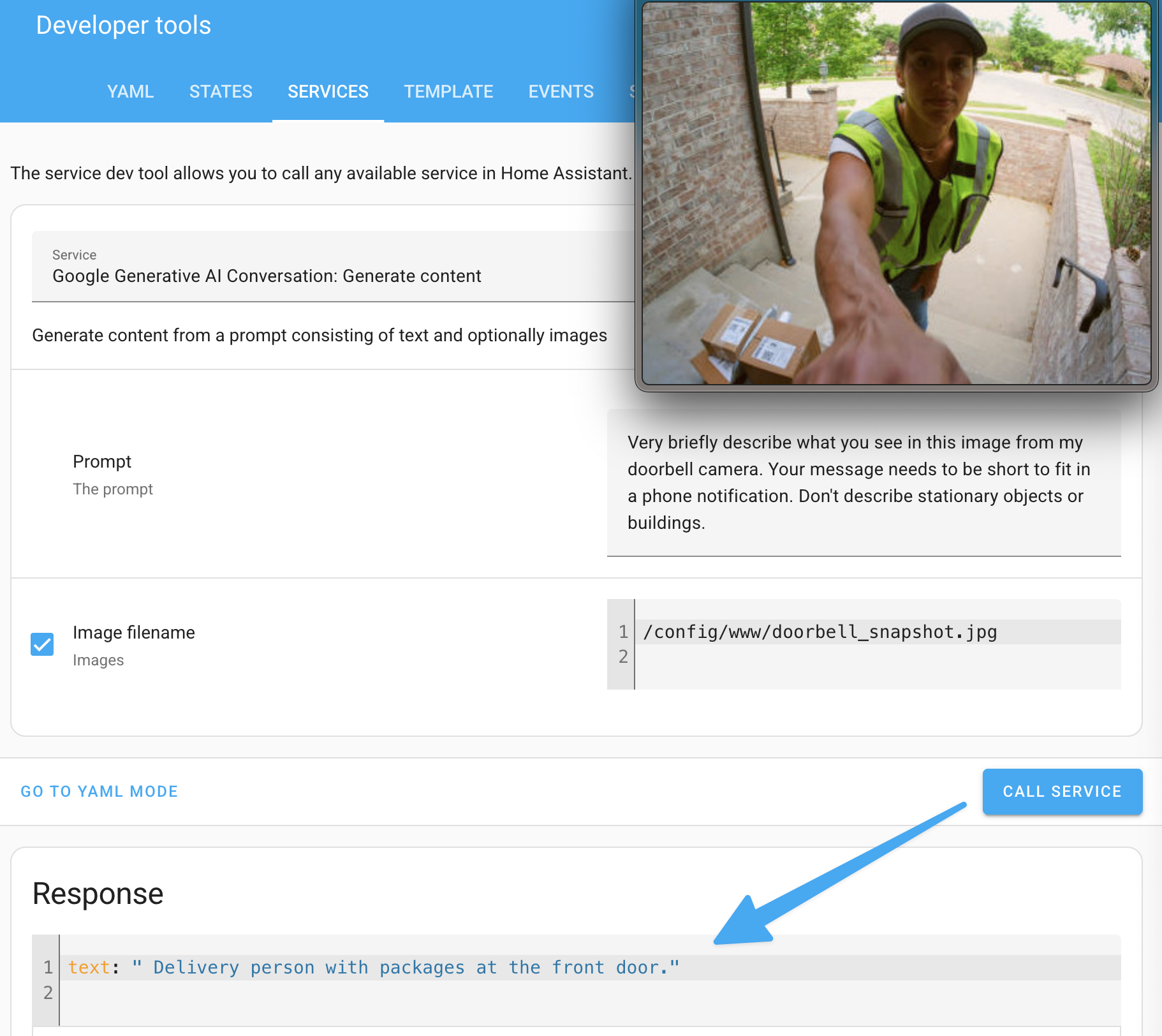 The Google Generative AI Conversation integration using the new Gemini Pro Vision models to describe what is seen on the doorbell camera.
The Google Generative AI Conversation integration using the new Gemini Pro Vision models to describe what is seen on the doorbell camera.
New integrations
We welcome the following new integrations in this release:
-
AirTouch 5, added by @danzel
Control your AirTouch 5 ducted air conditioning systems. -
Bang & Olufsen, added by @mj23000
Control your Bang & Olufsen Beolab and Beosound devices. -
Bring, added by @miaucl
Use Bring to create shopping lists and share them with your family. -
Elvia, added by @ludeeus
Import your historic energy usage from an Elvia-operated grid. -
Epion, added by @lhgravendeel
Monitor your Epion air quality sensors. -
Govee lights local, added by @Galorhallen
Control your Govee lights locally. -
Home Assistant Analytics Insights, added by @joostlek
This integration allows you to monitor information from the public and open Home Assistant Analytics. -
Hong Kong Observatory, added by @MisterCommand
Get weather information from the Hong Kong Observatory. -
Huum, added by @frwickst
Control your Huum smart sauna heaters. -
La Marzocco, added by @zweckj
Control your La Marzocco espresso machines. -
LeaOne, added by @bdraco
Monitor your LeaOne health device under the Xiaogui and BAGAIL brands. -
myUplink, added by @pajzo
Monitor myUplink-supported devices in Home Assistant. -
Rabbit Air, added by @al-s
Locally control and monitor your Rabbit Air air purifiers. -
Rainforest RAVEn, added by @cottsay
Pull in energy data from your Rainforest RAVEn energy monitor. -
Romy, added by @xeniter
Control your Romy vacuum cleaners. -
Tedee, added by @zweckj
Use your Tedee smart locks in Home Assistant. -
Teslemetry, added by @Bre77
Pull in live telemetry data from your Tesla vehicle via the Tesla Fleet API. -
TechnoVE, added by @Moustachauve
Control of TechnoVE Smart Charging Station using a local API. -
Traccar server, added by @ludeeus
Track your GPS devices by pulling data from a Traccar server.
This release also has a new virtual integration. Virtual integrations are stubs that are handled by other (existing) integrations to help with findability. The following virtual integrations have been added:
- City of Austin Utilities, provided by Opower
- Tapo, provided by TP-Link Smart Home
Integrations now available to set up from the UI
The following integrations are now available via the Home Assistant UI:
-
Ecovacs, done by @edenhaus
-
GPSD, done by @jrieger
-
Lupus Electronics LUPUSEC, done by @suaveolent
-
Lutron, done by @wilburCforce
-
Proximity, done by @mib1185
-
Time & Date, done by @gjohansson-ST
Release 2024.2.1 - February 9
- Catch APIRateLimit in Honeywell (@mkmer
- #107806 ) - Allow disabling home assistant watchdog (@mdegat01
- #109818 ) - Assist fixes (@synesthesiam
- #109889 ) - Bump Python matter server to 5.5.0 (@marcelveldt
- #109894 ) - Bump aioelectricitymaps to 0.4.0 (@jpbede
- #109895 ) - Skip polling of unavailable Matter nodes (@marcelveldt
- #109917 ) - Bump aio-geojson-geonetnz-volcano to 0.9 (@exxamalte
- #109940 ) - Handle Matter nodes that become available after startup is done (@marcelveldt
- #109956 ) - Allow modbus “scale” to be negative. (@janiversen
- #109965 ) - Don’t blow up if config entries have unhashable unique IDs (@emontnemery
- #109966 ) - Bump pyMicrobot to 0.0.12 (@spycle
- #109970 ) - Allow modbus min/max temperature to be negative. (@janiversen
- #109977 ) - Bump deebot-client to 5.1.1 (@edenhaus
- #109994 ) - Allow modbus negative min/max value. (@janiversen
- #109995 ) - Bump aioecowitt to 2024.2.1 (@edenhaus
- #109999 ) - Avoid key_error in modbus climate with non-defined fan_mode. (@janiversen
- #110017 ) - Update frontend to 20240207.1 (@bramkragten
- #110039 ) - Matching duplicate named entities is now an error in Assist (@synesthesiam
- #110050 ) - Log error and continue on parsing issues of translated strings (@mib1185
- #110046 ) - Bump evohome-async to 0.4.18 (@zxdavb
- #110056 ) - Bump py-aosmith to 1.0.8 (@bdr99
- #110061 )
Release 2024.2.2 - February 16
- Better teardown and setup of Roborock connections (@Lash-L
- #106092 ) - Fix freebox pairing in bridge mode (@agrenott
- #106131 ) - Update pytechnove to 1.2.2 (@Moustachauve
- #110074 ) - Bump aio-geojson-usgs-earthquakes to 0.3 (@exxamalte
- #110084 ) - Bump yalexs to 1.11.1, fixing camera snapshots from Yale Home (@abjorck
- #110089 ) - Fix typo in sensor icons configuration (@bieniu
- #110133 ) - Only schedule august activity update when a new activity is seen (@bdraco
- #110141 ) - Bump yalexs to 1.11.2 (@bdraco
- #110144 ) - Properly report cover positions to prometheus (@agoode
- #110157 ) - Fix device class repairs issues placeholders in Group (@silamon
- #110181 ) - Bump datapoint to 0.9.9 + re-enable Met Office Integration (@DustyArmstrong
- #110206 ) - Bump evohome-async to 0.4.19 (@zxdavb
- #110225 ) - Fix state classes issue translation in Group (@silamon
- #110238 ) - Handle no data error in Electricity Maps config flow (@jpbede
- #110259 ) - Fix cpu percentage in System Monitor (@gjohansson-ST
- #110268 ) - Bump aiopegelonline to 0.0.8 (@mib1185
- #110274 ) - Bump PySwitchbot to 0.45.0 (@bdraco
- #110275 ) - Update xknxproject to 3.6.0 (@farmio
- #110282 ) - Fix TDBU naming in Motionblinds (@starkillerOG
- #110283 ) - Bump linear-garage-door to 0.2.9 (@IceBotYT
- #110298 ) - Fix Starline GPS count sensor (@Anonym-tsk
- #110348 ) - Fix zone radius calculation when radius is not 0 (@bdraco
- #110354 ) - Bump py-sucks to 0.9.9 (@mib1185
- #110397 ) - Bump async-upnp-client to 0.38.2 (@StevenLooman
- #110411 ) - Mitigate session closed error in Netgear LTE (@tkdrob
- #110412 ) - Update pylutron to 0.2.11 (@wilburCforce
- #109853 ) - Update pylutron to 0.2.12 (@wilburCforce
- #110414 ) - Fix Raspberry Pi utilities installation on Alpine 3.19 (@agners
- #110463 ) - Coerce to float in Sensibo climate react custom service (@gjohansson-ST
- #110508 ) - Bump orjson to 3.9.14 (@bdraco
- #110552 ) - Fix tplink not updating IP from DHCP discovery and discovering twice (@bdraco
- #110557 ) - Modbus, allow received int to be a float. (@janiversen
- #110648 ) - Fix elkm1 service calls running in the executor (@bdraco
- #110655 ) - Bump aiounifi to v71 (@Kane610
- #110658 ) - Bump deebot-client to 5.2.1 (@edenhaus
- #110683 )
Release 2024.2.3 - February 22
- Fix reauth in Overkiz for config entries created prior to 2022.12 (@iMicknl
- #106251 ) - Handle deep standby and poweroffs of enigma2 devices gracefully (@autinerd
- #107462 ) - Add wake up timeout to Teslemetry (@Bre77
- #109037 ) - Fix set_temperature in Tessie climate platform (@Bre77
- #110445 ) - Fix uuid issue in Lutron (@wilburCforce
- #110524 ) - Update rokuecp to 0.19.1 (@ctalkington
- #110670 ) - Fix scene activation with climate entities with
Noneattribute values (@mib1185- #110684 ) - Remove matplotlib pinning due to Python 3.12 incompatibility (@sbyx
- #110706 ) - Bump roombapy to 1.6.12 (@mib1185
- #110762 ) - Ensure Tile timestamps are reported as UTC (@bachya
- #110773 ) - Detect reached API rate limit in Tankerkoenig (@mib1185
- #110432 ) - Bump aiotankerkoenig to 0.4.1 (@jpbede
- #110840 ) - Update govee-local-api library to 1.4.4 (@Galorhallen
- #110854 ) - Allow loading of more then 1 defined Apprise URL (@caronc
- #110868 ) - Reolink continue setup when internet blocked (@starkillerOG
- #110888 ) - Bump deluge-client to 1.10.0 (@tkdrob
- #110663 ) - Bump deluge-client to 1.10.2 (@dsander
- #110905 ) - Bump reolink-aio to 0.8.8 (@starkillerOG
- #110959 ) - Reset error state when Ecovacs bot is operational again (@mib1185
- #110962 ) - Bump motionblinds to 0.6.21 (@starkillerOG
- #110970 ) - Bump holidays to 0.43 (@gjohansson-ST
- #111039 ) - Fixes UniFi Protect light state check (@AngellusMortis
- #111058 ) - Bump pywebpush to 1.14.1 (@thecode
- #111082 ) - Bump aioairzone to v0.7.4 (@Noltari
- #111105 ) - Bump deebot-client to 5.2.2 (@edenhaus
- #111112 ) - Ignore cloudhook already removed in mobile app (@joostlek
- #111122 )
Release 2024.2.4 - February 25
- Return group unit of measurement when device_class is None (@PoppyPop
- #110973 ) (group docs) - Bump roombapy to 1.6.13 (@Orhideous
- #111187 ) (roomba docs) - Bump orjson to 3.9.15 (@bdraco
- #111233 ) - Set Lutron switch to device name (@joostlek
- #111293 ) (lutron docs) - Bump opower to 0.3.0 (@swartzd
- #109248 ) (opower docs) - Bump opower to 0.3.1 (@benhoff
- #111307 ) - Fix another name missing in wyoming getLogger (@llluis
- #111390 ) (wyoming docs) - Update caldav to 1.3.9 (@cdce8p
- #111429 ) (caldav docs) - Update guppy3 to 3.1.4.post1 (@cdce8p
- #111430 ) (profiler docs) - Bump openwebifpy to 4.2.4 (@autinerd
- #110676 ) (enigma2 docs)
Release 2024.2.5 - February 27
Need help? Join the community!
Home Assistant has a great community of users who are all more than willing to help each other out. So, join us!
Our very active Discord chat server is an excellent place to be at, and don’t forget to join our amazing forums.
Found a bug or issue? Please report it in our issue tracker
Are you more into email? Sign-up for our Building the Open Home Newsletter to get the latest news about features, things happening in our community and other news about building an Open Home; straight into your inbox.
Backward-incompatible changes
Authentication
We changed the way refresh tokens are handled. Refresh tokens are part of what keeps you logged in to Home Assistant.
Refresh tokens will be automatically deleted when unused. A refresh token is considered unused if it has not been used for a login within 90 days.
If your logged-in session hasn’t been used for 90 days, you will be logged out. You will need to log in again.
We recommend using Long-lived access tokens if you need a permanent token.
(@mib1185
Blink
The options flow that gave the option to set a custom scan interval has been removed.
Adjustable scan interval is no longer allowed, but the option has had no effect on the integration since 2023.11.
You can use an automation as an alternative to create a custom polling rate (documentation). Updating one entity in a blink configuration will update all entities in each blink configuration.
(@mkmer
Update Wi-Fi diagnostic to match new API units - previously Blink reported RSSI dBm, now they report generic 0-5 for signal strength.
(@mkmer
Cisco Webex Teams
This integration has been disabled. The upstream libraries used by Home Assistant are not compatible with Python 3.12.
This compatibility issue has been reported upstream
(@frenck
EZVIZ
The services ezviz.ptz, ezviz.sound_alarm, and alarm_sound have been moved
to button and select entities in release 2023.8. Support for the deprecated
services has now been completely removed.
If you are using these services in automations or scripts, you will need to update them to match this change.
(@jpbede
Google Generative AI Conversation
Any previous integration setups might have to be recreated or reconfigured with
the new models/gemini-pro instead of the legacy models/chat-bison-001.
(@tronikos
HomeWizard Energy
The Gas meter ID sensor is removed and the meter ID is now shown as a serial number in the device info panel instead.
(@DCSBL
Honeywell Total Connect Comfort (US)
The preset mode was returning “unknown” rather than “none”.
Any references to preset_mode may need to be updated.
(@mkmer
Huawei LTE
The services huawei_lte.clear_traffic_statistics and huawei_lte.reboot have
been moved to button entities in release 2023.8. Support for the deprecated
services has now been completely removed.
If you are using these services in automations or scripts, you will need to update them to match this change.
(@jpbede
JustNimbus
The following sensors have been removed from the JustNimbus integration since they’re no longer available through JustNimbus’ API:
- Pump starts
- Pump hours
- Error code
- Total replenished
- Pump flow
- Drink flow
The following sensors have been renamed:
- Total saved (
total_saved) -> Total saved (water_saved) - Total use (
totver) -> Total use (water_used) - Maximum reservoir content (
reservoir_content_max) -> Reservoir capacity (reservoir_capacity)
Automations or scripts using any of the removed or renamed entities should be updated. Once updated, the old entities can be safely removed.
(@kvanzuijlen
Litter-Robot
The services vacuum.turn_on and vacuum.turn_off were deprecated in 2023.11.
Support for the deprecated services has now been completely removed.
If you are still using them, please adjust your automations and scripts and
use vacuum.start and vacuum.stop instead.
(@jpbede
Lutron
The Lutron integration previously created fans as light entities. This has been changed to create actual fan entities instead.
If you have automations, scripts, scenes, or dashboards that used these light entities, you will need to update them to use the new fan entities.
MELCloud
The daily energy sensors have been removed to prevent being throttled by the external API. This mostly affects ATW devices.
For ATA devices, this sensor is also removed. However, the total energy consumed (if your device supports that) remains available. The latter supports long-term statistics, providing insights into daily energy usage via the energy dashboard or statistic card.
Met Office
This integration has been disabled. The upstream libraries used by Home Assistant are not compatible with Python 3.12.
This compatibility issue has been reported upstream
(@frenck
MQTT
MQTT sensor or binary_sensor configuration with an entity_category
explicitly set to config will fail to set up. Maintainers should set the
entity_category attribute to diagnostic or omit the config attribute.
(@jbouwh
When an MQTT entity has a device name equal to the entity name or starts with the device name, this will no longer be corrected.
When entities like these are created, they will have device and entity names in the friendly name. Suppose the device name is omitted because it is the same as the entity name. In that case, the entity name attribute should be null in the JSON payload or YAML configuration.
(@jbouwh
The support for MQTT vacuum entities with a legacy schema is removed after 6
months of deprecation. Users can use the state schema instead,
which is now the default.
(@jbouwh
Proximity
The proximity entity (proximity.*) is deprecated and will be removed in 2024.8.
It is superseded by sensor entities.
For each tracked person or device, one sensor for the distance and the direction of travel to/from the monitored zone is created. Further, for each Proximity configuration, one sensor that shows the nearest device or person and its distance and direction of travel to the monitored zone is created.
(@mib1185
Renson
The start time of day and start time of night sensors have been replaced by time entities. If you used these sensors in automations or scripts, you will need to update them to use the new time entities.
(@jimmyd-be
RESTful Command
Call to RESTful command services will no longer silently fail and will raise an exception on, for example, timeout or decoding errors.
You could consider using continue_on_error
for scripts and automations that use RESTful commands that are allowed to fail
occasionally.
(@RoboMagus
Roborock
The service vacuum.start_pause was deprecated in 2023.8. Support for the
deprecated service has now been completely removed.
If you are still using this service, please adjust your automations and scripts,
to use vacuum.pause or vacuum.start instead.
(@jpbede
Sensors
Setting last_reset for entities with a state_class other than total is
no longer supported. Please update your configuration if state_class
is manually configured (for example, in templates or when using customize to
override this attribute).
(@jpbede
Swiss public transport
The state value of the sensor is now a standardized timestamp.
Further, all timestamps and durations in the additional fields are now also
proper datetime/durations.
(@miaucl
TP-Link Smart Home
To prevent overloading the power strips, the energy data is now polled every
60 seconds. If you need to poll the data faster, please use an automation that
calls the homeassistant.update_entity service.
(@bdraco
Traccar
The YAML configuration for the Traccar integration has been deprecated and will be removed in Home Assistant 2024.8.0. Your YAML configuration will be automatically imported to the new Traccar Server integration.
If you previously used the scan_interval option, this is not being imported.
If you are in need of a custom polling interval, you can use an automation
to define your own custom polling behavior.
Learn more about that here.
(@ludeeus
Tuya
Tuya has provided an easier and improved login method for Home Assistant users.
Having a developer account with Tuya is no longer required; instead, you can scan a QR code with your Tuya Smart or Smart Life app to authenticate it with Home Assistant.
After updating to this release, Home Assistant will ask you to re-authenticate your Tuya Smart or Smart Life account using this new method.
(@frenck
The services vacuum.turn_on and vacuum.turn_off were deprecated in 2023.8.
Support for the deprecated services has now been completely removed.
If still use them, please adjust your automations and scripts and
use vacuum.start and vacuum.stop instead.
(@jpbede
Previously, Tuya would fall back to using the metric system if the temperature unit was not reported by a climate device. This behavior has been changed to use the default unit configured on your system instead.
(@DellanX
Webhooks
Since version 2023.7 you have been informed that the “local only” option of webhooks will become the default. With this release this change is now put into effect. Please, if needed, adjust your automation triggers.
(@jpbede
Withings
In withings, the unit of measurement of all duration-related sensors (for example, sleep, goal, and active time today) has been changed from measuring in seconds to measuring in either hours or minutes.
If you want to measure in a different unit, please change the preferred unit of measurement in the entity settings.
Z-Wave
The default rounding of numeric sensors to two decimals has been removed.
We now let the device and driver decide what precision should be reported. This allows devices with greater precision to report accurately.
You can change the display precision in the UI for the sensor or use a template sensor if you want to change the precision.
(@MartinHjelmare
Set suggested precision to 0 decimals for voltage sensors with a native unit in V. This will uniform the display precision of voltage sensors where there otherwise seems to be a variety of precision reported from different devices.
If you want to change the precision, you can do that in the sensor options in the UI or with a template sensor.
(@MartinHjelmare
The Fan and Dry climate Preset modes have been removed after a period of deprecation. If you haven’t done so, you should update your automations or scripts to use the corresponding Dry and Fan HVAC modes instead.
(@jbouwh
If you are a custom integration developer and want to learn about breaking changes and new features available for your integration: Be sure to follow our developer blog. The following are the most notable for this release:
- Changes to FlowManager.async_show_progress
- Changes to light color mode when lights display an effect
- Deprecate invalid use of sensor unit of measurement and state class
- Enumerating services
- Icon translations
- Introducing entity translation placeholders
- New entity features in Climate entity
- Properties changes for ha-state-icon
Farewell to the following
The following integrations are also no longer available as of this release:
-
Facebox has been removed. It is no longer possible to get API keys,
and thus, it is no longer possible to use this integration.
(@reedy
- #107005 ) -
Legrand Home+ Control has been removed as their API shut down in December.
Use the Netatmo integration as an alternative to
integrate your Legrand Home+ Control devices.
(@jpbede
- #107587 ) -
Life360 has been removed. They are now actively blocking third-party
access, including Home Assistant. The Home Assistant Companion app
is a good and (above all) privacy-friendly alternative.
(@pnbruckner
- #107805 )
All changes
Of course, there is a lot more in this release. You can find a list of all changes made here: Full changelog for Home Assistant Core 2024.2
